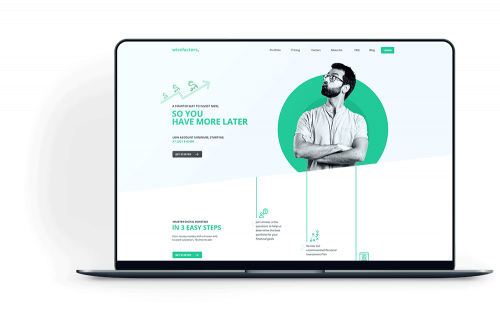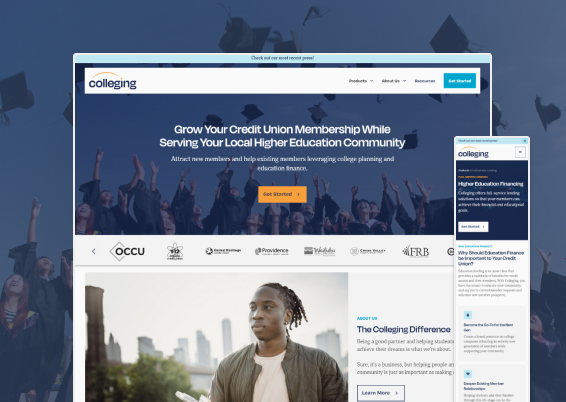The Power of User-Centered Site Layout in Growing Your Online Target Market
In a progressively affordable electronic landscape, the importance of user-centered web site layout can not be overstated. By focusing on the requirements and actions of users, companies can create web sites that not just bring in but also engage a diverse target market. Efficient layout concepts-- such as instinctive navigation and ease of access-- are necessary in cultivating individual contentment and loyalty. Comprehending just how to utilize these concepts properly elevates critical concerns regarding application and influence. What strategies can companies embrace to ensure their designs reverberate with customers and inevitably drive growth?

Recognizing User-Centered Layout
User-Centered Layout (UCD) is a basic technique to web site advancement that prioritizes the demands, preferences, and behaviors of end users throughout the layout procedure. This technique stresses comprehending individuals deeply-- with research methods such as meetings, studies, and usability screening-- to produce an internet site that resonates with them. By incorporating customer feedback at every stage, designers can ensure that the end product aligns very closely with individual expectations.
UCD promotes iterative style, where models are tested and fine-tuned based upon user communications and experiences. This cycle not only boosts use but likewise cultivates a feeling of possession among customers, as they feel their input is valued and impactful. In addition, UCD helps recognize possible obstacles and pain factors in the customer trip, allowing developers to address these difficulties proactively.
Inevitably, welcoming UCD brings about sites that are a lot more user-friendly, interesting, and efficient. By positioning users at the facility of the design process, organizations can produce electronic experiences that not just bring in but also preserve their target market, driving greater satisfaction and loyalty. In a competitive on-line landscape, this strategy is necessary for attaining sustained success.
Key Concepts of Customer Experience
A successful individual experience (UX) rests on numerous key principles that assist the style process and boost interaction in between individuals and the website. Firstly, use is paramount; the site needs to be intuitive, allowing users to navigate quickly and locate details quickly. This consists of clear labeling and a rational framework that minimizes cognitive tons.
Second of all, access plays an essential role in guaranteeing that all individuals, regardless of their disabilities or capacities, can effectively involve with the internet site. Including alt message for pictures, keyboard navigation, and display viewers compatibility promotes inclusivity.
Consistency is another important principle. A natural style language, from color pattern to typography, aids individuals develop familiarity and trust with the site (Website Design). It also enhances brand name identity
Moreover, responses devices are vital. Users need to receive clear and instant reactions to their actions, whether via aesthetic cues or verification messages, which improves their confidence in browsing the site.
Finally, mobile responsiveness can not be ignored. With an increasing number of individuals accessing internet sites by means of mobile phones, a layout that adjusts effortlessly to various screen dimensions is crucial for maintaining a favorable customer experience.
Benefits for Online Engagement
Reliable online interaction offers countless benefits that can significantly improve a website's total performance - Website Design. By fostering purposeful interactions between customers and the web site, organizations can grow a faithful target market that returns with consistency. Involved individuals are most likely to share material, therefore enhancing natural reach and attracting brand-new visitors through word-of-mouth promo
Boosted online involvement likewise causes boosted individual contentment. When individuals locate a site that reverberates with their demands, they are much more likely to explore its offerings thoroughly, which can cause greater conversion prices. In addition, engaging material motivates customers to spend more time on the website, lowering bounce prices and positively influencing online search engine ranking formulas.
Additionally, reliable engagement gives Continued important insights into individual choices and actions (Website Design). By analyzing user interactions, organizations can tailor their content and style strategies to satisfy the advancing expectations of their target market. This flexible strategy not only enhances engagement but likewise enhances the brand name's reputation as responsive and user-centric
Inevitably, focusing on on-line engagement through user-centered layout develops a flourishing community where both the organization and the target market advantage, resulting in sustained development and success in the electronic landscape.

Methods for Efficient Layout
To maximize the benefits of online interaction, using certain methods in website layout is extremely important. Instinctive navigating is vital; individuals ought to quickly discover info without complication. A well-structured food selection, clear labels, and a sensible power structure boost the customer experience and decrease bounce rates.
2nd, receptive style is critical in today's multi-device setting. Making certain that a web site adapts perfectly to various screen sizes cultivates accessibility, therefore suiting a wider target market. This versatility not only enhances user satisfaction however also favorably affects online search engine rankings.
Third, the use of aesthetic hierarchy guides customers' interest to why not try this out important aspects, such view as phone call to activity (CTAs) Using contrasting colors, differing font sizes, and strategic spacing can successfully direct individuals toward desired actions, assisting in higher interaction.
Furthermore, implementing consistent branding throughout all pages constructs count on and recognition. A cohesive shade system, imagery, and typography strengthen brand identification and create an expert look.
Lastly, enhancing loading speeds is crucial. Users are less likely to involve with a slow-loading site, making efficiency optimization a crucial facet of effective design. By integrating these strategies, website designers can enhance individual experience and inevitably grow their on the internet target market.
Real-World Success Stories
Success tales in user-centered site layout illustrate the concrete advantages of focusing on customer experience. One significant instance is the redesign of the site for the nonprofit organization, Charity: Water. By incorporating customer feedback, the organization streamlined navigating and highlighted storytelling via impactful visuals. Consequently, they experienced a 250% rise in online donations, demonstrating how an intuitive design can drive individual interaction and assistance.
An additional engaging instance is that of Airbnb, which used user-centered style concepts to boost their reservation process. By simplifying the user journey and integrating tailored referrals, they dramatically lowered website abandonment prices. This concentrate on individual experience contributed to a profits growth of over 70% in a single year, underscoring the relationship between properly designed interfaces and monetary success.
Moreover, the ecommerce giant, ASOS, implemented customer screening to fine-tune their mobile app. By addressing individual pain factors, they attained an exceptional 30% increase in mobile sales. These examples highlight that buying user-centered style not just boosts individual contentment yet also drives substantial company results, strengthening the essential function of customer experience in attaining online development.
Final Thought
By prioritizing individual needs and preferences, organizations can develop user-friendly and accessible electronic experiences that promote loyalty and drive conversions. The combination of individual feedback throughout the layout procedure not just minimizes bounce prices however also motivates expedition.
User-Centered Design (UCD) is a basic strategy to site development that focuses on the needs, choices, and behaviors of end individuals throughout the style procedure. By including customer responses at every phase, designers can make sure that the final item lines up very closely with user expectations.
An effective user experience (UX) hinges on several key principles that lead the layout procedure and improve interaction between customers and the internet site.Success tales in user-centered web site design illustrate the substantial advantages of prioritizing customer experience. These instances highlight that investing in user-centered design not just improves individual satisfaction yet also drives concrete business results, reinforcing the critical function of user experience in attaining on the internet growth.